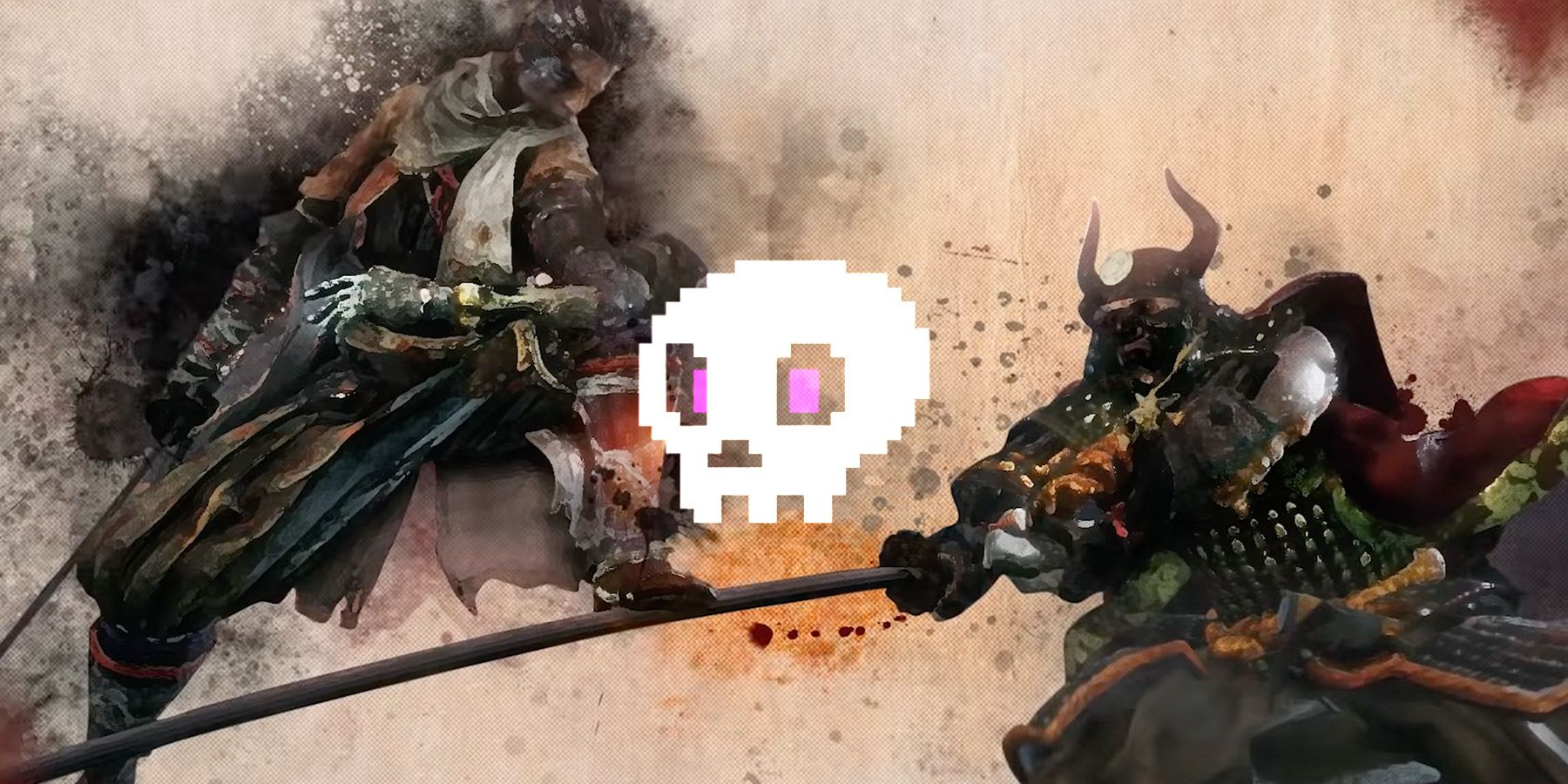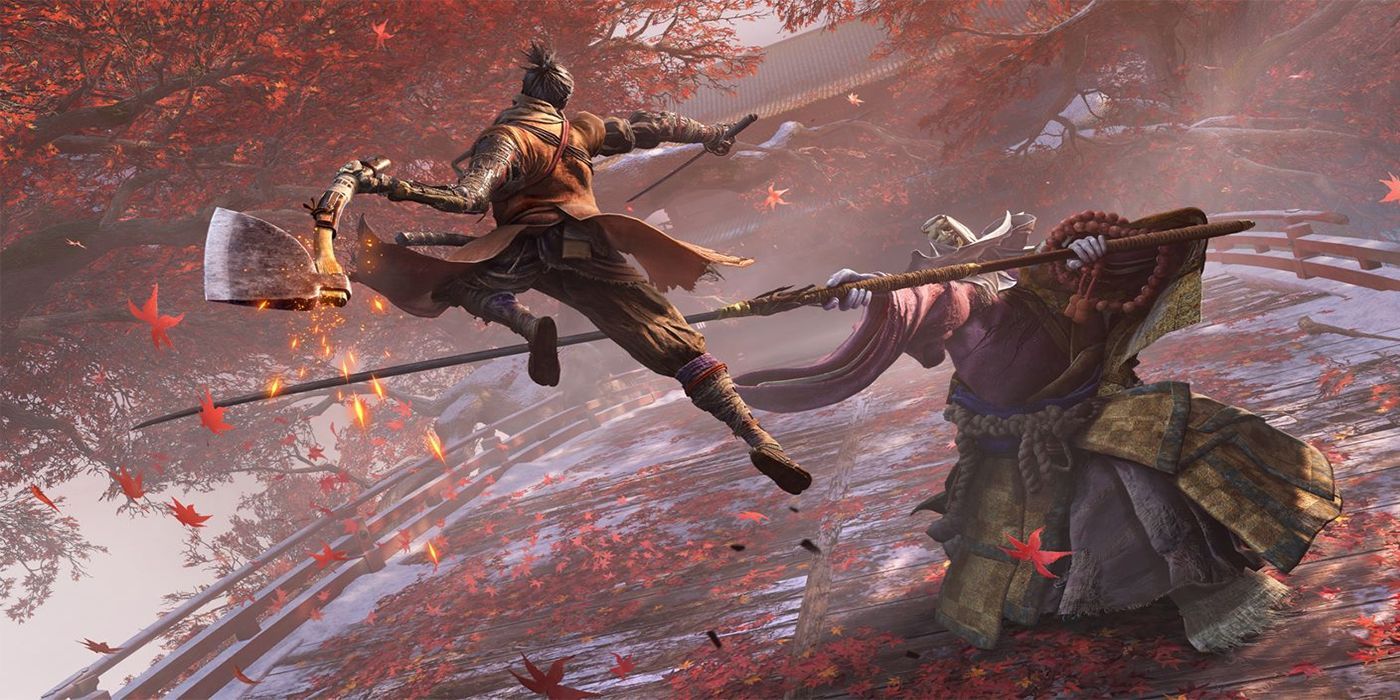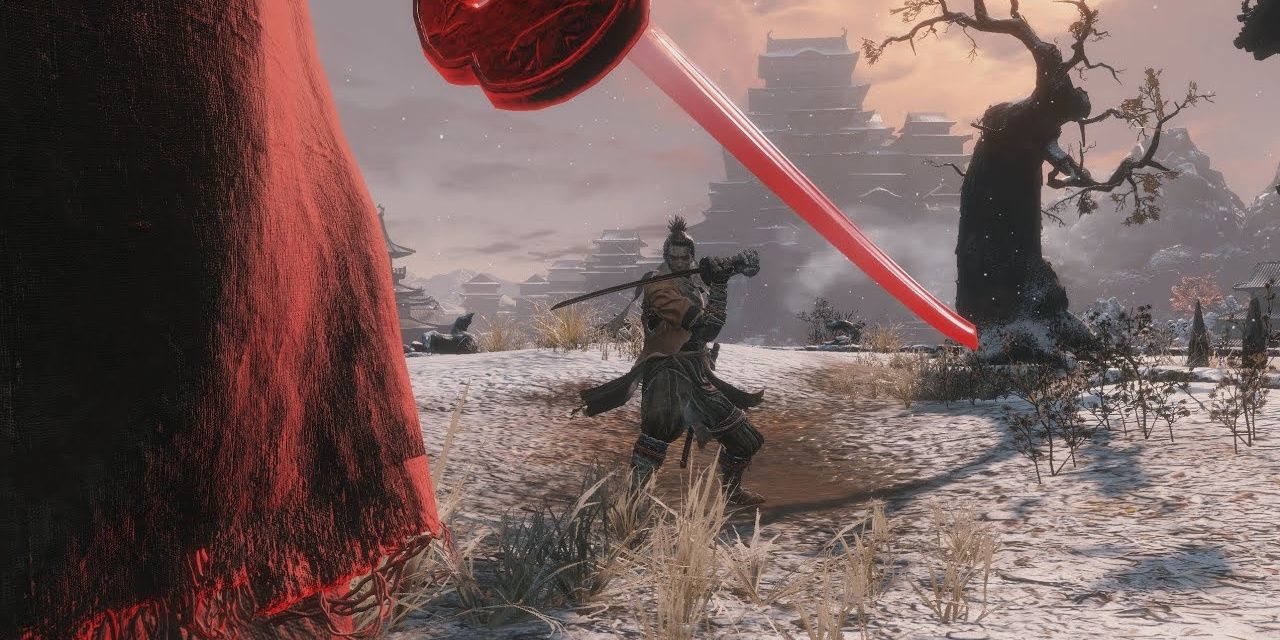At first glance, Sekiro: Shadows Die Twice looks and plays very much like a traditional FromSoftware game. Attacks have their usual wind-up animations, players can step dodge and block attacks, and enemies are ruthless when it comes to punishing bad plays. However, the more players get into Sekiro: Shadows Die Twice's focus on one-on-one combat, the more they realize it's more of a dance than a fight.
Once players have locked on to an enemy the dance begins. Players (or their enemy) will usually start out with an attack. This attack will be met with either a block or a dodge. It is from here where the attacked party can respond in kind by attacking back or using a technique or item (enemies in Sekiro tend to be craftier than those in other FromSoft games). This trading of attacks is the simplest dance; one which players get used to really fast, and one that feels very similar to a rhythm game.
A Complex Dance of Death
Of course, it wouldn't be a FromSoftware game without some complication. Enemies can chain multiple attacks in rapid succession, forcing players to respond and adapt according to their actions. Different attacks require different strategies. Normal attacks should be deflected or parried, sweep attacks have to be jumped over, and thrusts need to be met head-on with a Mikiri Counter. All of these actions feed into Sekiro's posture system. The more players time their deflects, Mikiri Counters, attacks, and jumps properly, the closer they get to breaking their enemy's posture and opening them up to a lethal Deathblow.
Spamming buttons (apart from possibly the block button) won't work as well in Sekiro as it does in other FromSoft games, as doing so cues a player's actions and makes getting the timing much harder. In order to get good at the game, Sekiro players have to learn each enemy's attack tempos and adjust their strategy. Doing so leads to an almost zen-like state where players memorize their enemies' movements; something very much akin to a rhythm game.
Sights And Sounds Help Focus The Battle
FromSoftware knows how important timing in Sekiro is, and it doubled down on animation and graphics to help players get in the right groove. Perfect deflects are given a bright red hue compared to standard blocks, perilous attacks can be clearly seen thanks to the red "danger" Kanji in the middle of the screen, and that's not mentioning the stellar character animations in Sekiro which let the player know just what attack their enemy is planning to pull out of their arsenal.
Audio cues are also much more pronounced than ambient music. Weapons swish in the air and twang when they meet another weapon, and perilous attacks have a distinct chirp to go with the aforementioned "danger" Kanji on-screen. It's this melding of both animation and audio which lets players adapt to new opponents quicker and helps them keep up in a combat song they are initially unfamiliar with.
With audio and animation in the forefront of combat, Sekiro: Shadows Die Twice plays like a high-stakes rhythm game. This makes it even easier to play blindfolded than other FromSoft games. Those who keep up and use their opponents' moves against them are rewarded with an enemy's defeat, while those who can't are swiftly met with the "Death" screen. As with any rhythm or dance game, whoever takes the lead and is the most aggressive is usually the winner.
Sekiro: Shadows Die Twice is out now for PC, PS4, Stadia, and Xbox One.



